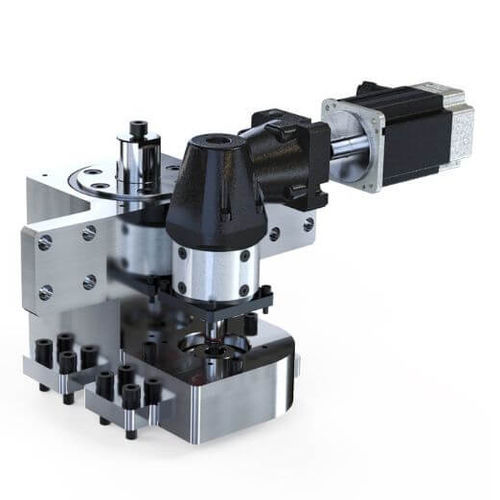
#Industry News
AGV Industry Research Report
Newstart AGV solution
Introduction to the AGV Industry
What is an AGV?
AGV stands for Automated Guided Vehicle, a special type of wheeled mobile robot equipped with electromagnetic or optical guidance devices, enabling it to travel along designated paths. AGVs are primarily designed for precise navigation, safety protection, and various material handling functions. Powered by batteries and equipped with non-contact guidance devices, AGVs operate under computer supervision, automatically traveling and docking at specific locations based on preset route planning and operational requirements. AGVs are widely used in industrial production, logistics transportation, healthcare, and commercial services.
Classification of AGVs
AGVs (Automated Guided Vehicles) can be classified from multiple perspectives, including vehicle type, navigation method, drive mechanism, load handling method (end effector or application), control type, load capacity, indoor or outdoor application, and application field.
The classifications include
Handling AGVs (like lurking tug, rear tug, carrying, conveyor, and fork-lift types);
Navigation methods (electromagnetic, magnetic tape, QR code, laser, inertial, and vision guidance);
Drive types (single wheel, dual wheel, multi-wheel, differential, and omnidirectional);
Load handling methods (forklift, towing, carrying, roller, pallet, lifting, SMT, explosion-proof, and assembly types), among others.
AGV Structure Diagrams
AGV-1 Structure Diagram
Advantages of AGVs
Compared to traditional handling methods, AGVs (Automated Guided Vehicles) offer the following advantages:
Flexible Route Setting: The operating routes of AGVs can be set by ground control stations or directly on the vehicle via an input keyboard. They can travel on a fixed loop or move back and forth between two or more points. This flexibility allows for the transportation of different products without the need to change the conveying equipment or the layout of the facility.
High Flexibility: AGVs represent a departure from the fixed operating modes of other conveying equipment, with ground stations providing dynamic scheduling and dispatch. Changing routes is as simple as adjusting the guidance lines or, in the case of non-tracked guidance, altering the software program. It’s also easy to add or remove routes and vehicles, benefiting rapid adjustments in industrial structure and product upgrades.
Advanced Intelligence: AGVs are capable of autonomously finding the shortest path; their operation is not limited to one or a few circuits but throughout the entire system. The use of computer management at ground stations facilitates convenient interfaces with storage/retrieval systems, CNC devices, FMS, and automated assembly systems. Equipped with infrared or ultrasonic sensors, AGVs can automatically alert and stop when obstacles are detected or when approaching another vehicle too closely.
Multi-directional Movement: Besides moving forward, backward, and diagonally, AGVs can also rotate around a point within their plane, adding to their versatility in maneuvering.
AGV Production Process
AGVs (Automated Guided Vehicles) are intelligent logistics equipment, and their production involves the following manufacturing processes:
Design and Development Stage: This phase involves defining the functional requirements, design, and intelligent systems of the AGV. Communication with customers helps determine the intended use and performance indicators of the AGV. Designers then create the design, which is evaluated and simulated before being translated into specific manufacturing processes.
Component Manufacturing: Key to AGV production is controlling the quality and precision of components. This starts with processing the main body of the vehicle, using laser cutting and bending techniques to shape the body panels, followed by precise welding to ensure structural integrity. Additionally, other components like wheels, tracks, and transmission systems are manufactured, requiring high-precision CNC machinery and specialized equipment.
Assembly Stage: This phase includes installing the electrical system, transmission system, and various sensors and control devices. During assembly, accurate adjustment of component positions and angles is necessary to ensure the stability and accuracy of the AGV’s operation. Assembled AGVs undergo rigorous functional testing to ensure all systems operate correctly.
Testing and Delivery Stage: The AGV’s navigation system is fine-tuned during this stage to accurately recognize its environment and path, ensuring it responds appropriately. Load-carrying tests are also conducted to verify effective material handling. Once all tests are passed, the AGV is ready for delivery to the customer.
AGV Industry Chain Analysis
AGV supply chain
Leading AGV Companies in China
China AGV Company analysis report
In China, domestic manufacturers hold a significant market share in the mobile robot sector. In 2022, four companies reached the billion yuan sales club, including Hikrobot, Geek+, Siasun Robot, and Quicktron. Newstart, a strategic partner of them, dominates the AGV transmission system market, leveraging its extensive experience to maintain a competitive edge.
AGV Industry Outlook
The future of the AGV industry looks promising, with wider adoption in manufacturing, increased efficiency in logistics, and expanded applications in healthcare and public transport. Key to competition will be mastering core and advanced manufacturing technologies, ensuring companies remain at the forefront of the industry.
We have experienced technology team to help you design the AGV solution, if you want AGV gearbox, welcome to contact us.







